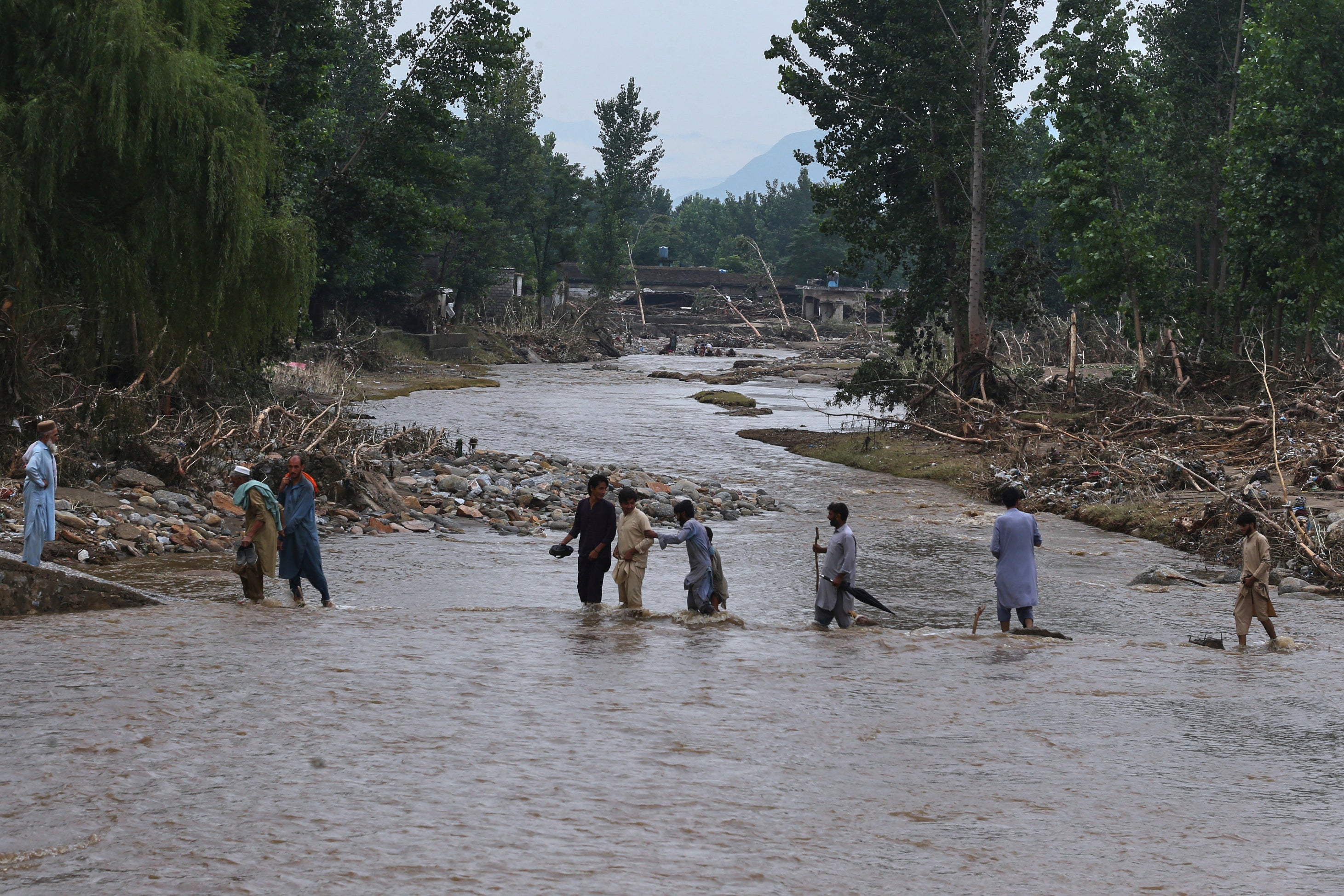At least 33 people have died in flash floods in India-administered Jammu and Kashmir due to unusually heavy monsoon rains, with around 30 Hindu pilgrims killed on their way to the Vaishno Devi shrine and another three people drowned in separate floods in Doda district.
While releasing water from dams is a routine flood-control measure, India’s decision came amid a period of particular sour relations following the two countries’ four-day armed conflict in May. That episode saw India suspend a key water sharing agreement between the two neighbours.
Pakistan said Islamabad had received the warning on Wednesday and subsequently issued an alert for flooding on three rivers which flow into the country from India.
The release of water – estimated at around 200,000 cusecs – threatens to worsen an already dire situation in Pakistan. Authorities said there was “very high to exceptionally high” risk of flooding along the Ravi, Chenab and Sutlej rivers that flow into Pakistan’s Punjab province. The region, home to half the country’s 240 million people, called in army units to support evacuations and relief operations.
More than 167,000 people have been displaced so far in rain-related incidents, including nearly 40,000 who left voluntarily after warnings earlier this month.
Since late June, flooding linked to intense monsoon rains has killed more than 800 people across Pakistan, half of them in August.
On Wednesday, rescuers evacuated more than 20,000 people from low-lying districts on the outskirts of Lahore after rising waters swamped villages along the Ravi river. Boats were used to ferry families to higher ground in Kasur, Okara and Bahawalnagar, where many villages remain under water.

Prime minister Shehbaz Sharif praised officials for what he called “timely evacuations” to avoid further casualties and said tents and relief supplies were being distributed. But disaster management authorities warned that floodwaters were still rising in several districts, with more rainfall forecast.
Across the border, northern India has also been hammered by heavy downpours and landslides. In Jammu, more than 368mm of rain fell on Tuesday alone, cutting electricity and phone services.
Television footage showed vehicles swept away after a bridge in Madhopur collapsed. Schools were shut across parts of Jammu, Himachal Pradesh and Punjab, while highways linking the Himalayan region to the rest of India were blocked by landslides.
“The immediate priority is restoration of electricity, water supply and mobile services, for which the authorities have been working continuously overnight,” said federal minister Jitendra Singh.
This year’s crisis again highlights the vulnerability of South Asia’s densely populated river basins to climate-driven extremes. Scientists say rising global temperatures are making the monsoon more erratic, fuelling heavier bursts of rain and intensifying the risk of catastrophic floods.
India and Pakistan, nuclear-armed neighbours locked in a tense standoff since the clashes in May, routinely accuse each other of using water as a political weapon. Under the Indus Waters Treaty, India must notify Pakistan of dam releases, but Islamabad has complained of poor communication. In May, India decided to pause the agreement from its side following the Pahalgam terror attack that led to a four day war between two countries.
Officials told the Reuters news agency that Wednesday’s warning was passed through diplomatic channels rather than the commission that normally manages water disputes.
Additional reporting by agencies


